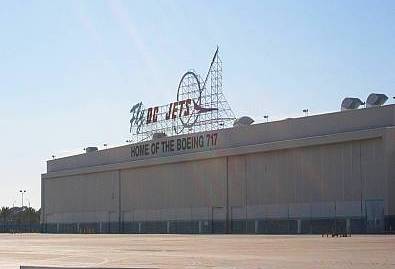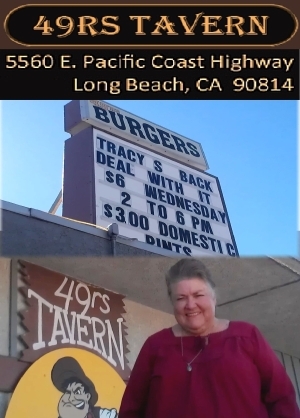|
Huge Former Douglas Property ("Fly DC Jets"), Now 717 Plant, Is Sold By Boeing Realty to Sares Regis Group, Councilwoman Schipske Says
|

 |
|
Huge Former Douglas Property ("Fly DC Jets"), Now 717 Plant, Is Sold By Boeing Realty to Sares Regis Group, Councilwoman Schipske Says
|

 |
(Oct. 4, 2012, 7:05 p.m.) -- In a Facebook dispatch this afternoon (Oct. 4), Councilwoman Gerrie Schipske says Boeing Realty has completed the sale of Douglas Park and the historic former Douglas Plant -- the Boeing 717 facility along Lakewood Blvd. at Conant Street with the iconic neon "Fly DC Jets" still on its rooftop -- to the Sares Regis Group (SRG).

"This effort has been in the works for some time, with all parties, including the City, working together to complete the transaction. Boeing has done great work with the Douglas Park development, and now we are excited to have a world-class real estate developer complimenting that success both at Douglas Park and at the 717 Facility. We are anticipating a great future for this development site under the leadership of Sares Regis," says Councilwoman Schipske (in whose district the property is located). Details of exactly what the Irvine-based Sares Regis Group plans to do with its newly acquired property, and when, weren't immediately available this afternoon [Oct. 4] [SRG didn't return our call near the end of the business day] On its website, Sares Regis says "For decades, SRG Commercial has created value for users and investors through commercial real estate development, investment and property services. [SRG website text[ SARES-REGIS Groupís Commercial Division has earned the reputation as a leading west coast real estate firm recognized for its accomplishments in the development, acquisition and management of quality industrial and commercial properties. In September 2008, Mayor Bob Foster announced (with multiple TV news outlets present) that third parties planned to acquire the property and turn it into "Long Beach Studios," a state of the art motion picture/television production facility. The announcement came just as the economic downturn deepened, Wall Street had its near meltdown, "The Great Recession" arrived...and the studio transaction didn't materialize. For a time, Councilwoman Gerrie Schipske also pressed city officials to do more to encourage Tesla Motors, a cutting-edge electric car maker, to locate to the site...and was critical of Mayor Foster and city officials for in her view not doing enough. Downey and Long Beach were both finalists...and Tesla ultimately chose to locate in northern CA, leaving Downey officials steamed and leaving the property's future uncertain. During his Jan. 2010 State of the City message, Mayor Foster contrasted his otherwise definitive statements about the city's future with a shoulder-shrugging comment to the effect that the site would either become an auto plant or a movie studio (drawing light laughter from the audience, and the Mayor)...although neither appears to be the case now. So...what's allowed, and not allowed, or only conditionally allowed under the property's current zoning? This was amended within the past twelve months at the request of Boeing Realty. On December 6, 2011, the Council voted after a public hearing to amend the Douglas Aircraft Planned Development District (PD-19) as described as follows in an accompanying city staff memo: ...The Boeing Company is proposing the amendment to eliminate the uncertainty associated with interim uses within PD-19. An updated Ordinance allowing permanent uses for the 717 site is expected to solidify the market for long-term economic interests with potential tenants. As the most recent amendment was adopted in 2008, the interim period is in its third year. The current PD-19 Ordinance references manufacturing use standards that are correspondence with the use standards of the IG zone, the amended document shall include definitive language that clarifies specifically which of those standards will also be applicable within PD-19. As the IG zone includes some of the most intensive uses allowed within the City, attention has been given to the exclusion of certain trucking, storage and manufacturing uses that are less appropriate within PD-19. Boeing's website includes a lengthy history of the gargantuan facility. [Boeing.com text] The Long Beach site is a component of Boeing Commercial Airplanes, producing the 717 twinjet and supporting in-service airplanes. Opened by the Douglas Aircraft Company in 1941, the Long Beach site in California became part of Boeing as a result of the merger of Boeing and McDonnell Douglas in 1997.
Contact us: mail@LBReport.com |
  
  Presented by Signal Hill Petroleum (8:00-10:00 p.m.)        Hardwood Floor Specialists Call (562) 422-2800 or (714) 836-7050  |
Contact us: mail@LBReport.com